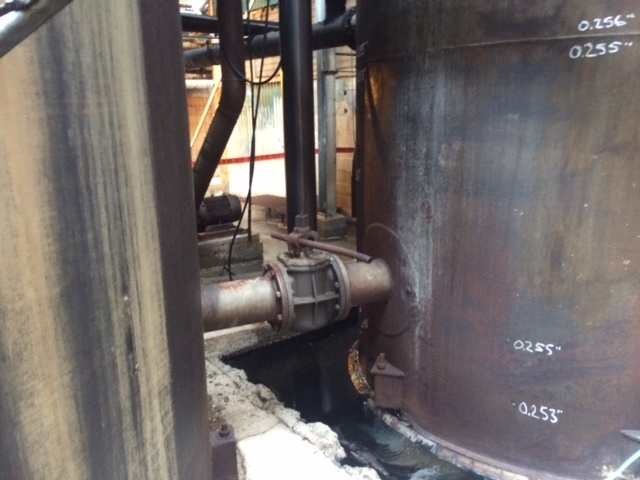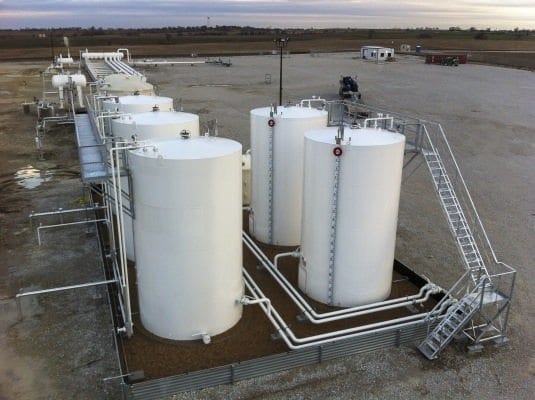How API 650 Welding Inspection Helps Eliminate Cracks and Promotes Reliability
Wiki Article
Understanding the Significance of Welding Evaluation in Top Quality Assurance Processes
Welding assessment is a crucial part of quality control in construction and manufacturing. It ensures that welds adhere to established standards, which is critical for architectural honesty. Different inspection strategies, from visual to ultrasonic testing, aid identify defects early. This proactive approach not just avoids expensive repair work yet also boosts safety. Comprehending the nuances of welding inspection can disclose its broader implications for sector conformity and online reputation. API 650 Welding Inspection. What exists under the surface of these methods?The Role of Welding Assessment in High Quality Guarantee
While welding is a vital procedure in various markets, its top quality and stability pivot considerably on reliable examination methods. Welding inspection works as a guard, making sure that welds fulfill established criteria and specifications. This process not only identifies flaws but additionally evaluates the total handiwork, consequently adding to the security and long life of bonded frameworks. Assessments are integral to quality control, as they help maintain and stop expensive failings conformity with industry guidelines. By employing knowledgeable assessors, companies can enhance their functional effectiveness and support their track records. Additionally, the understandings got from evaluations can inform continuous enhancement, leading to far better techniques and training for welders. Ultimately, welding examination works as a crucial link in the quality control chain, guaranteeing that every joint is reputable and capable of holding up against the rigors of its desired application. This diligence is necessary for the honesty of facilities and the safety of end users.Sorts Of Welding Inspections
Welding examinations incorporate a series of methods made to review the top quality and honesty of welds. These examinations are essential in guaranteeing conformity with market standards and requirements. Usual kinds of welding evaluations consist of visual evaluation, which enables instant recognition of surface area abnormalities; ultrasonic testing, which uses high-frequency sound waves to detect interior flaws; and radiographic testing, utilizing X-rays or gamma rays to expose weld stability below the surface area (API 650 Welding Inspection). Additionally, magnetic fragment screening is made use of to recognize surface area and near-surface suspensions in ferromagnetic materials, while color penetrant testing uses a method for exposing surface-breaking defects. Each kind of inspection serves a certain function, adding to the overall quality control procedure. By utilizing a combination of these strategies, examiners can offer a complete assessment of welding high quality, inevitably ensuring the safety and security and dependability of welded structuresUsual Flaws Spotted in Welding
A selection of usual flaws can occur during the welding procedure, impacting the honesty and efficiency of welded structures. These flaws consist of porosity, which involves trapped gas pockets within the weld, damaging its toughness. Cracks may likewise form because of quick air conditioning or inappropriate joint design, bring about possible failure under tension. Insufficient fusion happens when there wants melting of the base metal, resulting in weak bonds. One more defect, undercutting, includes the removal of base steel along the weld edge, developing a significant structural like this weakness. Furthermore, excessive spatter can impact the appearance and require further cleansing or repair. Imbalance can lead to unequal weld beads, jeopardizing the general high quality. Determining these defects early through proper examination techniques is necessary to guarantee the integrity and safety of welded parts, inevitably protecting the performance of the whole framework.
Advantages of Normal Welding Evaluations
Normal assessments play a significant role in keeping the top quality and safety and security of welded frameworks, especially due to the common flaws previously outlined. These examinations provide a chance to recognize and correct issues before they intensify into serious problems, guaranteeing architectural integrity. By identifying flaws early, organizations can minimize fixing prices and avoid prospective project delays.In addition, normal welding assessments enhance compliance with market standards and regulations, fostering trust amongst stakeholders. This adherence not only safeguards the firm's online reputation but likewise adds to enhanced safety and security for personnel and the general public.
In addition, consistent assessments help with much better training and skill development for welders, as comments from assessments can direct renovations. Inevitably, the benefits of normal welding assessments prolong past immediate top quality assurance, advertising long-lasting functional efficiency and integrity in welded structures.
Finest Practices for Effective Welding Inspection
Implementing finest practices in welding examination is vital for assuring the greatest criteria of quality and safety. Initially, inspectors need to be properly trained and certified, possessing a detailed understanding of welding techniques and products. Utilizing sophisticated evaluation modern technologies, such as ultrasonic testing and radiography, improves the discovery of issues that may not show up to the nude eye. Developing a clear examination strategy, outlining the requirements and frequency of examinations, guarantees uniformity and thoroughness.

Recording all searchings for thoroughly is important for traceability and responsibility. Normal calibration of examination equipment ensures accuracy, while preserving a clean and well organized work space lowers the threat of contamination. Furthermore, promoting open communication among staff member assists in the sharing of insights and advertises a society of top quality. By sticking to these ideal techniques, organizations can significantly improve their welding top quality assurance procedures, eventually resulting in much safer and a lot more trusted items.

Frequently Asked Questions
What Qualifications Are Required for a Welding Assessor?
A welding inspector usually calls for qualification from recognized organizations, such as the American try these out Welding Culture (AWS) or the International Institute of Welding (IIW), together with appropriate experience and knowledge in welding processes and quality standards.Exactly How Typically Should Welding Inspections Be Performed?
Welding assessments should be performed regularly, normally at numerous project stages, including prior to, during, and after welding procedures - API 650 Welding Inspection. The frequency typically depends upon task requirements, regulative needs, and the complexity of the welds included
What Are the Prices Associated With Welding Inspections?
The costs connected with welding evaluations vary extensively, normally ranging from a couple of hundred to several thousand bucks, depending on factors like assessment kind, job dimension, and place, affecting general job spending plans and timelines.Can Welding Inspections Be Conducted From Another Location?
Yes, welding evaluations can be carried out from another location utilizing innovative technologies such as drones, cameras, and ultrasonic screening. These approaches allow inspectors to examine weld stability without being literally present, boosting efficiency and security in various atmospheres.How Do Examination Outcomes Impact Job Timelines?
Evaluation results can considerably influence task timelines by recognizing defects early, causing necessary rework or adjustments. Delays may take place if assessments reveal issues needing resolution, eventually influencing total task completion and spending plan adherence.Welding evaluations include a range of techniques developed to evaluate the high quality and integrity of welds. Common kinds of welding examinations consist of aesthetic examination, more helpful hints which enables for instant identification of surface area irregularities; ultrasonic screening, which utilizes high-frequency audio waves to find interior imperfections; and radiographic testing, employing X-rays or gamma rays to disclose weld integrity under the surface area. Consistent inspections facilitate better training and skill advancement for welders, as feedback from inspections can assist improvements. Applying finest methods in welding evaluation is important for assuring the highest requirements of top quality and safety and security. Welding inspections should be carried out regularly, commonly at numerous job phases, including prior to, during, and after welding processes.
Report this wiki page